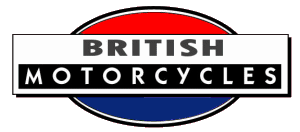

See also Riley Motorcycles
1912 The Riley Cycle Co changed its name to Riley (Coventry) Limited.
1914 Stanley Riley founded yet another company, the Nero Engine Co.
1918 After the war, the Riley companies were restructured.
The Nero Engine Co joined Riley (Coventry) as the sole producer of automobiles.
Riley Motor Manufacturing came under the control of Allan Riley to become Midland Motor Bodies, a coach-builder for Riley.
The Riley Engine Co continued under Percy as the engine supplier.
1931 Announced that the Riley Engine Co and Midland Motor Bodies were being taken over by the company. Victor Riley is Chairman.
1933 Victor Riley is Chairman.
1934. Riley (Coventry) Ltd. Issue of additional shares. Directors: Percy Riley (Chairman and Managing Director), William Riley, George Ernest William Broade and Bertram Rupert Hester-Baker.
1936 Victor Riley had set up a new ultra-luxury concern, Autovia.
In February, 1938, Riley (Coventry) and Autovia went into receivership.
1938 September. Both companies were purchased by Lord Nuffield. Mentions the founder William Riley now aged 87. Victor Riley appointed as Managing Director.
1947 Victor Riley was removed by Nuffield and the Coventry works were shut down as production was consolidated with MG at Abingdon.
In early 1913, Percy was joined by three of his brothers ( Victor, Stanley, and Allan) in a new business focused on manufacturing entire automobiles. This Riley Motor Manufacturing Company was located near Percy's Riley Engine Company. The first new model, the 17/30, was introduced at the London Motor Show that year. Soon afterwards, Stanley Riley founded yet another company, the Nero Engine Company, to produce his own 4-cylinder 10 hp (7.5 kW) car. Riley also began manufacturing aeroplane engines and became a key supplier in Britain's buildup for World War I.
In 1918, after the war, the Riley companies were restructured. Nero joined Riley (Coventry) as the sole producer of automobiles. Riley Motor Manufacturing came under the control of Allan Riley to become Midland Motor Bodies, a coachbuilder for Riley. Riley Engine Company continued under Percy as the engine supplier. At this time, Riley's blue diamond badge, designed by Harry Rush, also appeared. The motto was "As old as the industry, as modern as the hour."
Riley grew rapidly through the 1920s and 1930s. Riley Engine produced 4-, 6-, and 8-cylinder engines, while Midland built more than a dozen different bodies.
The Riley Brooklands was one of the most successful works and privateer racing cars of the late 1920s and early 1930s, particularly in hill climbs and at Le Mans, providing a platform for the success of motorsports' first women racing drivers like Kay Petrie and Dorothy Champney. It was based on Percy Riley's ground-breaking Riley 9 engine, a small capacity, high revving engine, ahead of its time in many respects. It had a hemispherical combustion chamber and overheard valves and has been called the most significant engine development of the 1920s. Its longevity is illustrated by Mike Hawthorn's early racing success after WW2 in pre-war Rileys, in particular his father's Sprite.
But by about 1936 the company had overextended, with too many models and too few common parts, and the emergence of Jaguar at Coventry was a direct challenge. Victor Riley had set up a new ultra-luxury concern, Autovia, to produce a V8 saloon and limousine to compete with Rolls-Royce. Meanwhile, Riley Engine Company had been renamed PR Motors (after Percy Riley) to be a high-volume supplier of engines and components. Although the rest of the Riley companies would go on to become part of BMC, PR Motors remained independent. After the death of Percy Riley in 1941, the company began producing transmission components and still exists today as Newage Transmissions. Percy's widow Norah ran the company for many years and was Britain's businesswoman of the year in 1960.
Source: Graces Guide
If you have further information or a query related to this page, please contact us